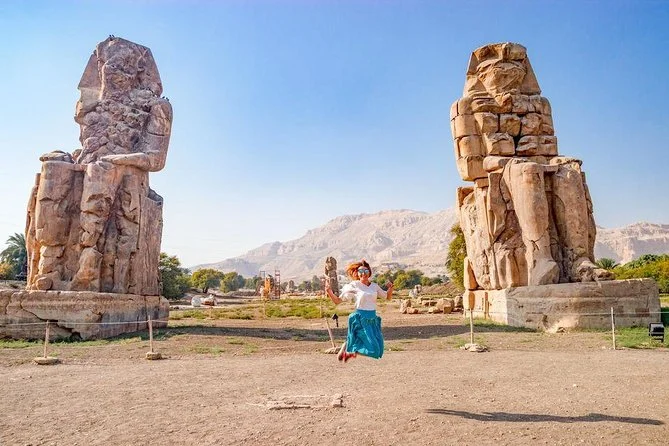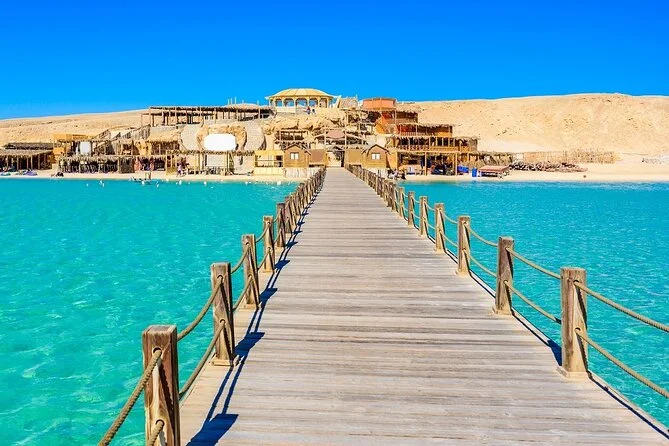Hurghada Day Trips 2026: Luxor & the Valley of the Kings
Quick Summary (TL;DR): You can visit Luxor—and the Valley of the Kings—on a long day trip from Hurghada; expect a 4–5 hour drive each way, pre-dawn departure, and guided entry to key sites.
At 4:45 AM the Eastern Desert is slate-blue and hushed. Thermoses steam, headlamps blink, and coaches roll south along the Red Sea before cutting inland through apricot-colored wadis. By late morning, the West Bank’s cliffs rise and the entrance to the Valley of the Kings glows with heat and history, the day’s purpose finally in view.
Why go now? In 2025–2026, travelers are pairing reef time with culture-rich inland forays. Small-group operations have refined routes and pacing, leaving early to beat mid-day heat and crowd spikes. As of 2026, most itineraries use the Hurghada–Safaga–Qena corridor, covering roughly 290–320 km in 4–5 hours, with structured stops and timed entries that make a one-day dip into ancient Thebes both feasible and worthwhile.
What Makes Luxor Special in 2026
A well-run day trip balances ambition with realism. The core experience is focused: a morning on the West Bank inside exquisitely painted tombs—often three are included by default—followed by a measured sweep of the East Bank’s monumental scale. Electric trolleys help bridge distances from the Valley visitor area, reducing walking under the sun, while guides steer toward cooler, less congested tombs when temperatures climb past 38°C by early afternoon in late spring and summer. Lunch is typically a quick Nile-side pause before Karnak’s hypostyle forest: 134 papyrus columns, shadows striping the stone like sundials. During our March 2025 visit, a pre-dawn start placed us at the Valley gates soon after opening, yielding 40 quiet minutes inside a beautifully preserved 19th Dynasty tomb before the tour-bus wave crested.
Top Things to Do in Hurghada
- Valley of the Kings entry: A guided circuit of three tombs (with optional add-ons) prioritizes artistry over quantity. Booking a cultural sightseeing tour ensures permits, transfers, and timing are handled end-to-end.
- Karnak & Luxor Temple combo: Trace pharaonic timelines between Karnak’s Great Hypostyle Hall and Luxor Temple’s colonnades; most day trips streamline both sites with a paced afternoon visit.
- Coastal heritage detour to El Quseir: On rest days, trade temples for Red Sea history—Ottoman-era fort, coral-stone lanes, and a quieter old town vibe south of Hurghada.
Where to Stay in Hurghada (2026 Guide)
Base yourself where early pick-ups are efficient. Central Hurghada suits value-minded travelers and solo guests who want walkable dining and short transfers. Families often favor Makadi Bay and Soma Bay for calm beaches, kids’ clubs, and straightforward coach access. Couples seeking resort polish look to Sahl Hasheesh’s promenade hotels; kite surfers and design lovers gravitate to El Gouna to the north. For first-timers planning a Luxor day, a Hurghada town base keeps transfer times predictable and amenities close.
Best Time to Visit Hurghada
October–April offers the most comfortable Luxor day trips: highs around 22–28°C in December–February and 26–34°C in March–April, with moderate crowds. May and September are warm (30–38°C) but manageable with very early starts. June–August brings intense Upper Egypt heat—often 40–42°C midday—so expect earlier departures, limited tomb time, and higher demand for air-conditioned coaches. Shoulder months (October–November, March–April) balance rates and comfort.
Getting There and Around
Most tours depart Hurghada between 4:30–5:00 AM, driving via Safaga and Qena to Luxor, with comfort stops. Local operators report typical return times around 8–9 PM, depending on traffic and site pacing. Private vehicles offer flexibility and quieter tomb windows; shared coaches reduce costs and carbon per traveler. Bring government-issued ID, cash for optional tomb add-ons, a wide-brim hat, and 2+ liters of water per person. On-site, electric carts shorten walks at the Valley of the Kings; uneven surfaces and steps remain, but selected tombs have gentler slopes. Flash photography is prohibited; follow posted rules.
Sustainable Travel Tips
Choose small-group tours that cap group size and employ certified Egyptologists. Carry a reusable bottle and refill at your hotel before departure; avoid single-use plastics. Dress sun-smart (long sleeves, hat) to minimize reliance on disposable cooling products. Inside tombs, do not touch painted walls—skin oils accelerate deterioration. Offset long-haul driving by combining multiple cultural stops into a single day, and buy crafts from cooperative workshops rather than mass-import souvenir stalls.
Frequently Asked Questions
How many days do you need in Hurghada?
Plan 4–5 days for a balanced trip: two or three beach-and-reef days, one long cultural day to Luxor, and a buffer day for rest or a light local outing. This cadence reduces fatigue from the 4–5 hour drive each way.
Is Hurghada good for families?
Yes. Family-friendly resorts, shallow beaches, and kid-focused amenities make Hurghada straightforward with children. For Luxor day trips, opt for private transport, pack snacks and sun protection, and consider swapping one temple for the air-conditioned Hurghada Grand Aquarium on a rest day.
What's the best month to visit Hurghada?
November is a sweet spot: sea still warm, daytime highs around 26–28°C, and manageable crowds. March–April offers similar comfort with spring breezes; summer is viable but requires pre-dawn departures for Luxor and strict heat management.
Egypt rewards the traveler who plans for tempo—slow reefs, swift roads, and timeless stones. If the day to Luxor stirs an appetite for more, pair it with a lighter Red Sea day among the bright shallows of the Giftun Islands to recalibrate before your flight home.



